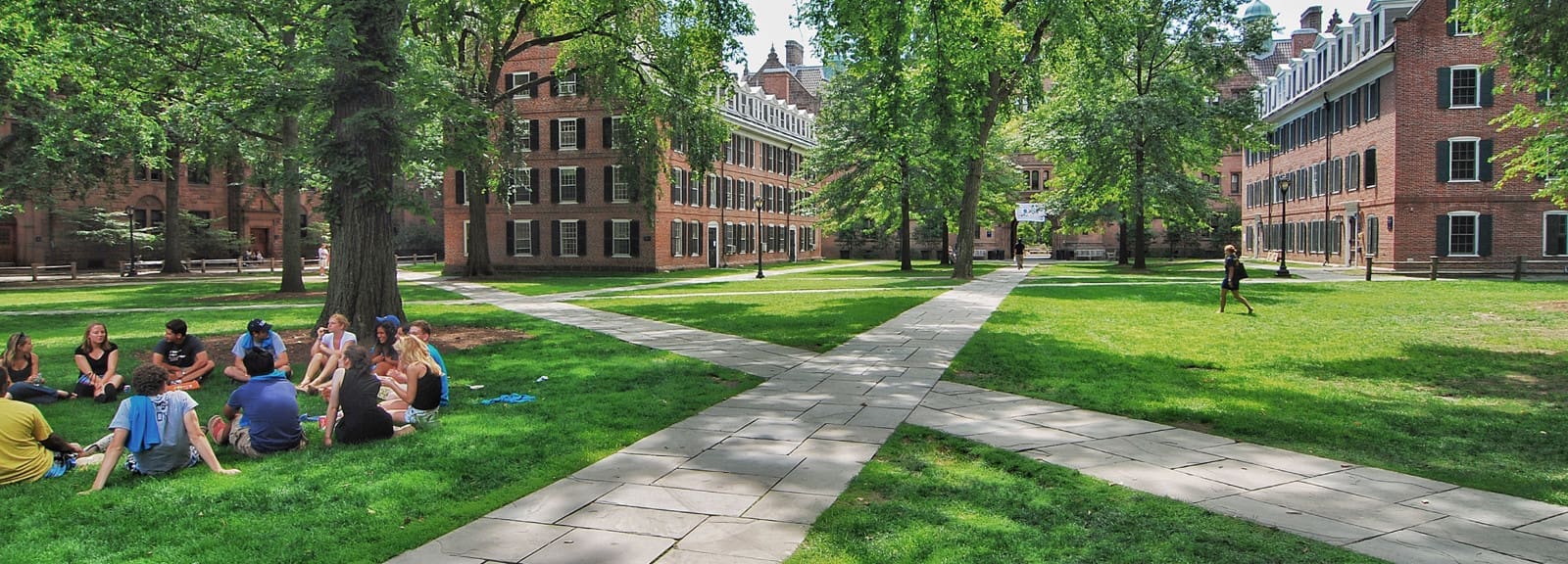
Get stories and expert advice on all things related to college and parenting.

The pandemic has changed the college landscape with more changes on the near horizon.
This spring, on extremely short notice, students scrambled to vacate their residence halls, move home (if they could), and adjust to remote learning.
Parents adapted to having their college kids home and have worked hard to make sure their students have a good environment to attend class online — even as they cope with the many changes in their own lives.
It all started in January with colleges and universities confronting extraordinary circumstances they couldn't fully anticipate when spring semester began. First came decisions to cancel study abroad programs. Then, as the pandemic intensified, college presidents made the very tough call to close campuses and transition to online learning.
Now students across the country — especially incoming freshmen — are rethinking their choices amid the rapidly changing pandemic outlook. Colleges and universities are concerned about low enrollment and lost revenue, which will impact not only Fall 2020 but will also have a ripple effect well into the future on how parents and students view and value higher education.
Colleges are already struggling financially after losing income from canceled winter and spring sports seasons, refunding room and board payments, and in some cases providing partial tuition refunds. Other sources of revenue like facility rentals and campus bookstores are no longer boosting the bottom line.
In addition, schools have seen alumni contributions lessen and endowments shrink, which affects their ability to provide financial aid even as students in economic crisis apply for more support. Finally, because of travel restrictions, safety concerns and visa complexities, colleges expect to lose international students who often pay full tuition.
Some institutions are projecting $100 million losses for spring semester alone, and many are bracing for an even bigger financial hit in the fall as they look at the possibility of having to continue remote classes and potentially losing a sizeable segment of their incoming first-year class.
Here's are the big questions and what we know so far.
Colleges are currently debating what to do about fall classes. Most are considering multiple scenarios and notifying students and families that they hope to make a decision by June or early July at the latest about reopening campus or continuing online. Every institution has its own unique situation and environment, and options will be impacted by what's going on regionally along with factors relating to size (small vs. large), public vs. private, urban vs. rural, etc.
In an interview with the New York Times, Colby College president David Greene admits that continuing with online classes is not a winning strategy — especially for a small, private institution. Colby hopes to reopen with in-person classes even if it means delaying the start of fall semester. “Our whole model of education and all of its power comes from close human interaction,” Mr. Greene said.
The University of Arizona and Arizona State University (with a combined total enrollment of 180,000+ students) were one of the first large public university systems to announce definitively that they will reopen with face-to-face as well as online classes in August. A statewide antibody testing effort is a central component of UA's plans, according to President Robert C. Robbins. "Our plan is to Test, Trace and Treat to present our campus community a flexible and adaptive teaching and learning environment." Preparing campus will involve modifying classrooms, enhancing student health services and creating alternative building floor plans.
A condensed fall semester is emerging as one of the most popular routes to reopening. In this plan, informed by CDC guidance and epidemiological data, students return to campus as usual in August or September but forgo fall and Thanksgiving vacations in order to return home before Thanksgiving for an extended winter break.
The University of Colorado at Boulder, a large public university, has announced a phased return to campus for fall that will incorporate social distancing. The school expects to offer students a choice among in-person, online and hybrid opportunities and will modify lab and studio classes as needed. Condensed terms are a possibility at CU, too.
It goes without saying that athletics, social events, performances and many other aspects of campus life will look different. And schools that plan to return to in-person instruction and campus residential life in the fall acknowledge that a severe outbreak on campus could mean further changes to the fall calendar and/or a return to fully online classes.
To sum it up, options for fall at American colleges and universities include:
The Chronicle of Higher Education is tracking the reopening plans of 870+ schools — this list is a good place to start for information and includes links to official college/university announcements.
The pandemic hit during the height of the admissions process. College and universities are fully expecting a significant decline in enrollment from both returning students and incoming students who had planned to join the class of 2024 but are reconsidering their decision. At the same time, admissions departments are facing significant recruitment challenges as they turn their attention to the next class of applicants.
According to a new study from the Art & Science Group, a Baltimore-based higher education consulting firm, one in six high school seniors have largely given up their plans to start college this year. The report states:
Institutions will need to remain flexible in the admissions process, communicate creatively, and provide as much clarity as possible on what colleges are doing in response to COVID-19 and the implications those actions will have on the admissions process. This will have to be accomplished in an environment that remains full of uncertainty and in a way that compensates for a lack of in-person contact and in the face of significant financial challenges that could impact college financial aid.
As reported in the New York Times, Congress provided $14 billion for higher education in the rescue bill; $6 billion was in the form of emergency cash grants for students in financial distress.
College presidents say that won’t be enough to protect some institutions from slashing staff and programs, cutting back scholarships or perhaps even going under.
In a letter to Nancy Pelosi, Speaker of the House of Representatives, the American Council on Education predicted college enrollment for the upcoming academic year would drop by 15 percent, including 25 percent for international students. This possibility presents insurmountable financial obstacles that may cause many to close permanently. Within public university systems, we may see consolidations and contractions. Private colleges and universities with healthy endowments should be able to weather the storm, but many smaller colleges — some of which were already on the brink — could face financial ruin.
Students and their families are struggling with the financial and psychological impact of the pandemic. Incoming students and current students have difficult decisions to make regarding attending college in the fall.
Those decisions are partially shaped by the decisions the college makes regarding the fall semester. They're also impacted by concerns for health and safety and the financial impact of the country’s response to the virus.
Will families choose to send their kids to college? Will they choose to delay? Will they choose a different path altogether? In the study cited earlier surveying student responses to Covid-19, students said there were several issues that could keep them away from campus in the fall. Economic disruptions, safety considerations and general uncertainty about what the college experience would look like lead the list.
One parent, in an interview with the Washington Post, explained why she would encourage her daughters to take time off if campus didn't reopen. “When you save their entire lives to send them to this fabulous experience — the idyllic location, the labs, small discussion groups — and you’re writing this huge check for this comprehensive experience — to say that’s equivalent to an online course?...It’s not true.”
Students and their families are considering the following scenarios:
This decision could be based on several factors: new economic constraints, health and safety concerns, or a general reassessment of what higher education is worth and new willingness to consider alternatives.
For families struggling financially, students may decide to attend a more affordable college. Many students and their families are worried about ramifications of another virus outbreak along with continuing restrictions on travel — wishing to remain closer to home, students are choosing a college with an easy commute.
For some students attending a school that's considering online fall classes, it doesn’t seem logical to pay high tuition fees for online courses. As one student wrote, “Zoom university is not worth 50K a year. I didn’t pay to attend Zoom.”
There are some upsides to the situation for incoming students who haven't chosen a college yet (many schools extended the deadline until June 1st, and others have even reopened admissions to new applicants). Schools are offering all kinds of incentives to get admitted students to commit to a spot for fall. Some of these perks could save serious money: locking in tuition for four years, free parking or football tickets, and more.
If colleges aren't able to return to a campus experience, many students will look at local community colleges for the fall. If you're going to attend class online, it makes sense to spend less per credit hour and transfer those credits when colleges return to normal. A semester or year at a CC also saves money on room and board if the student continues to live at home.
A significant percentage of incoming first-year students are considering a gap year — though it's important to note that traditional travel-based gap year experiences may not be feasible.
Mark Kantrowitz, publisher of SavingForCollege.com, reminds students to pay attention to the impact this choice may have on any financial aid they were awarded by the college. In most cases, students who defer will have to reapply for aid the following year and there is no guarantee they will receive an equivalent award. According to Kantrowitz, “The offer of admission can be deferred, if approved by the college, but not the offer of financial aid.”
Many returning students are also considering a gap year (or "Life Development Year" as Robert C. Wolcott describes it in Forbes) — the challenge is to make sure it's time well spent.
If campuses don’t reopen, upperclassmen who are currently living in off-campus housing, or who plan to transition from on to off campus this summer, might consider living there while attending classes online. In this scenario, they would be able to live near campus with other students and experience some of the college experience while waiting for campus to reopen.